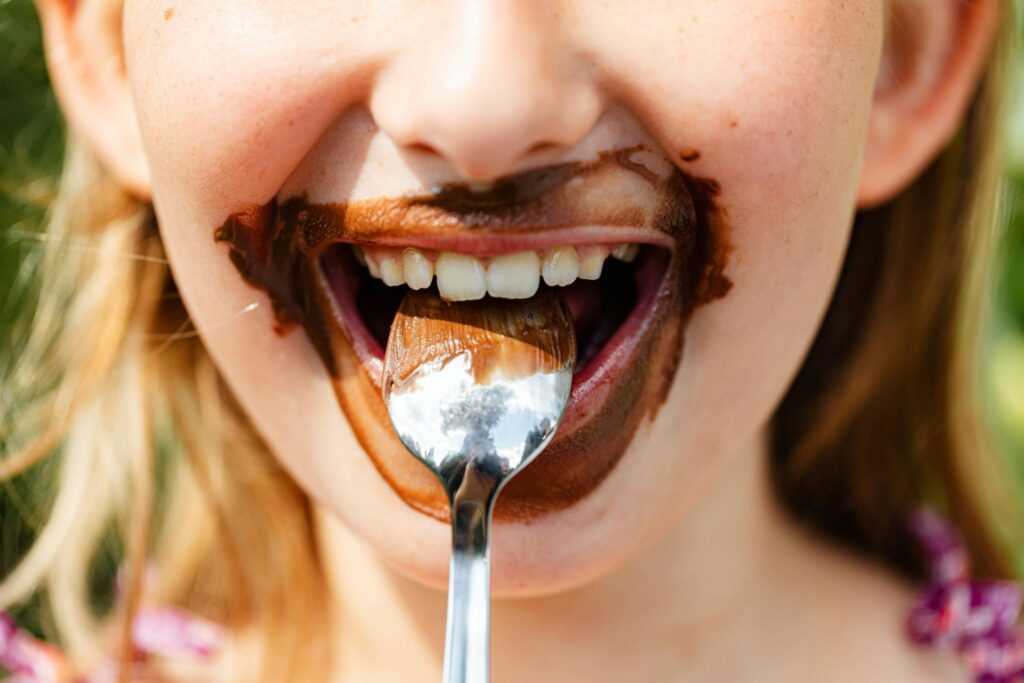Emotional eating is something most of us have experienced at some point—reaching for comfort foods when we’re stressed, sad, or even bored. But why do we do this? Is it simply a lack of willpower, or is there something deeper at play?

The truth is, emotional eating is driven by a mix of biological, psychological, and environmental factors. In this post, we’ll break down the science behind why we turn to food for comfort, how emotional eating can lead to weight gain, and—most importantly—how to break the cycle for good.
What Is Emotional Eating?
Emotional eating occurs when we use food to cope with emotions rather than to satisfy physical hunger. It’s not necessarily about needing energy—it’s about using food to manage feelings like stress, loneliness, boredom, or anxiety. For as long as I can remember, whenever i’ve been stressed I’ve eaten something to ‘relieve’ myself, believing that I deserved that relief.
Signs of Emotional Eating:
• You eat when you’re not physically hungry
• You crave specific comfort foods (usually high in sugar, fat, or carbs)
• Eating provides temporary relief (but be honest, the guilt follows).
• Stress or boredom triggers the urge to snack
• You eat mindlessly, sometimes without realizing how much you’ve consumed
Understanding these signs is the first step toward regaining control.
The Biology of Emotional Eating: How Your Brain & Hormones Play a Role
Emotional eating isn’t just psychological—your body’s hormones and brain chemistry play a big role.
1. Stress & Cortisol: The Hormonal Connection
When you’re stressed, your body releases cortisol, the “fight-or-flight” hormone. Cortisol increases cravings for high-calorie foods—like chocolate, chips, and ice cream—because your brain thinks you need energy for survival.
Studies show that chronic stress leads to more cravings for high-fat and sugary foods, which explains why people who experience frequent stress are more prone to emotional eating.
My nightly ice-cream habit consisted of sometimes two (or three) bowls to make me feel better. Unfortunately I always felt gross afterwards even though I suppressed those feelings. Since cravings can be tough in the beginning I used ashwagandha, a stress-reducing supplement that helps regulate cortisol levels and support hormone balance. If emotional eating is a nightly battle as it used to be for me, calming your system before cravings hit can make a huge difference (at least until you get them under control).
2. Dopamine & the Brain’s Reward System
Eating highly palatable foods triggers dopamine, the brain’s “feel-good” chemical. This is why eating a slice of cake when you’re sad can temporarily lift your mood.
However, the more we rely on food for dopamine boosts, the more our brain links eating with emotional relief—creating a habit loop that’s hard to break. Pretty soon you just don’t feel great about yourself in general.
Instead of using food to boost dopamine, you need to get creative and replace it with non-food rewards like:
• Listening to music
• Taking a short walk
• Journal & Practicing gratitude
• Starting a hobby

3. Ghrelin & Leptin: The Hunger Hormones
Your body’s hunger hormones also impact emotional eating:
- Ghrelin (“the hunger hormone”) increases appetite and is often higher during stress or sleep deprivation.
- Leptin (“the fullness hormone”) tells your brain when you’re full, but emotional eaters often ignore these signals.
Eating balanced meals with protein, fiber, and healthy fats helps regulate hunger hormones and reduces cravings. Instead of relieving the craving by snacking, simply get rid of the craving altogether! Now that’s way more sustainable!
What really helped me, especially in those early days, when going from bowls of ice-cream to nothing was too daunting, were pistachios, an excellent high-protein snack. Also, removing the shell for each nut makes you a little more mindful about your eating habit.
The Psychology of Emotional Eating: Why We Use Food for Comfort
Beyond biology, emotional eating is deeply rooted in our psychology.
1. Food as an Emotional Escape
For many, eating is an avoidance strategy—a way to distract from negative emotions like stress, sadness, or even boredom.
Next time you feel the urge to snack, ask yourself:
• Am I truly hungry?
• What emotion am I feeling right now?
• Is there a non-food way to cope with this feeling?
Try This Instead:
Journaling, deep breathing, or even calling a friend can help break the habit of turning to food.
Get this free and printable Emotional Eating Journal to help track your triggers.
2. Childhood Conditioning & Food Associations

Many of our eating habits are shaped in childhood. For me, I associated not being ‘satisfied’ unless my stomach was completely full, often too full. This lead to a early on-set habit of regular overeating.
Were you rewarded with sweets for good behavior? Were certain comfort foods linked to happy memories? One of the biggest (if not the biggest) addiction our species suffers is our addiction to sugar and it starts early.
All these early experiences create deep-seated associations between food and comfort.
You need to start reframing your relationship with food—instead of viewing food as a reward, try celebrating small wins with non-food treats. Enjoy a relaxing bath or a new book. Rewire your brain to healthier habits.
How to Break the Cycle of Emotional Eating
The good news? You can break free from emotional eating with awareness and practical strategies. I have done it, and it’s an absolute relief. That’s the beauty about being human – If we don’t like something we are adaptable enough to change it!
Take these steps to change your behaviour today! :
1. Identify Your Triggers
Keep a Food & Mood Journal to track when and why you eat. Journal daily or weekly, or whenever feels right.
Look for patterns—do you snack when you’re stressed at work? Do you reach for sweets when feeling lonely? The very act of journalling it, will make your mind recognize and reconsider that behaviour the next time it happens. Now, instead of eating those sweets focus on the root cause, in this case ‘loneliness – and take steps to deal with it directly.
Before i fall asleep at night, I briefly visualize everything I have eaten that day, together all laid out on a table. Try it. How does visualizing that food make you feel about your eating that day?
2. Eat Balanced Meals to Prevent Cravings
Skipping meals or eating too little increases cravings later in the day. Aim for:
🍳 Protein (eggs, chicken, tofu)
🥑 Healthy fats (avocado, nuts, olive oil)
🥦 Fiber-rich foods (vegetables, beans, whole grains)
3. Find Non-Food Coping Mechanisms
Instead of eating, try:
• Meditation or deep breathing
• Walking or stretching
• Engaging in a hobby (coloring, music, reading)
4. Practice Mindful Eating
Before eating, pause and rate your hunger on a scale of 1-10. If it’s below a 5, you may be eating out of emotion rather than hunger.
Slow down and enjoy your meals without distractions. Studies show that mindful eating reduces binge eating and helps regulate appetite.
Final Thoughts
Emotional eating is a complex mix of biology, psychology, and habit loops—but once you understand the science behind it, you can start making empowered choices that relieve yourself from cravings and mindless snacking. Get in control of your urges!
Take Action Today:
✔ Start tracking your eating patterns with a Food & Mood Journal
✔ Try non-food coping strategies when emotions hit
✔ Nourish your body with balanced meals to prevent cravings

